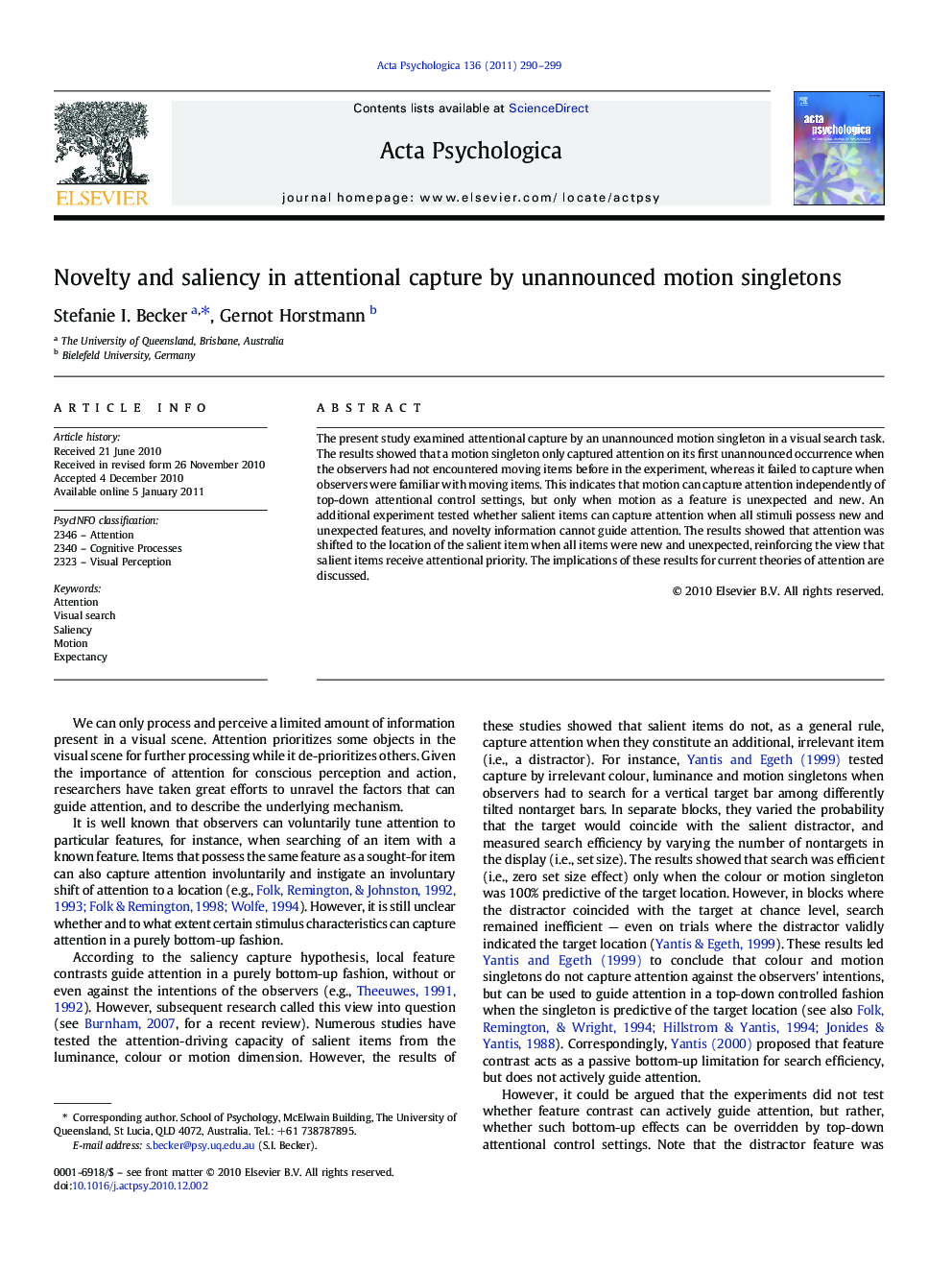| Article ID | Journal | Published Year | Pages | File Type |
|---|---|---|---|---|
| 920130 | Acta Psychologica | 2011 | 10 Pages |
The present study examined attentional capture by an unannounced motion singleton in a visual search task. The results showed that a motion singleton only captured attention on its first unannounced occurrence when the observers had not encountered moving items before in the experiment, whereas it failed to capture when observers were familiar with moving items. This indicates that motion can capture attention independently of top-down attentional control settings, but only when motion as a feature is unexpected and new. An additional experiment tested whether salient items can capture attention when all stimuli possess new and unexpected features, and novelty information cannot guide attention. The results showed that attention was shifted to the location of the salient item when all items were new and unexpected, reinforcing the view that salient items receive attentional priority. The implications of these results for current theories of attention are discussed.
Research Highlights► Motion singletons can capture attention in visual search. ► Provided, that motion is an unexpected feature. ► Salient items can capture in surprising displays when all items are new and unexpected. ► The findings capture without relevant top-down attention set. ► Provide the currently best evidence that saliency can actively guide attention.
